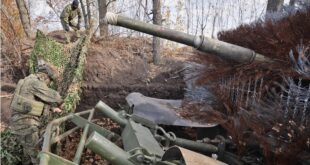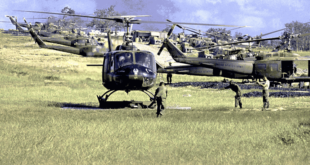Editor’s note: Six armed men on April 30, 1980 stormed the Iranian embassy in London. The men took hostages, and issued demands. After six days, the terrorists killed a hostage and threw his body outside. Enter the British Special Air Service (SAS) and Operation Nimrod. British crisis expert Robert McAlister analyzes what unfolded from there.
ANALYSIS by Robert McAlister FRGS
Forty-four years ago this week, the SAS were planning and preparing, ready if needed to assault the Iranian Embassy in Kensington London to free 26 hostages taken several days before on April 30.
The situation the SAS are facing is a potential armed assault on a stronghold containing 56 rooms over six floors, with terrorists armed with grenades and automatic weapons holding hostages in several different locations.
This now infamous event which played out live on TV screens on 5 May 1980 brought the then-fairly unknown SAS into the full public glare, where it has remained ever since.
During this preparation phase the SAS continued to hone their skills preparing for an assault on the Iranian Embassy. They had trained for years for just such an event, but continued to sharpen their contextual knowledge and tactics.
Thorough planning and preparation are essential for approaching any critical task. Whilst the eventual SAS intervention was a success, as with every plan things did not go to plan!
For all the hours of preparation, things went wrong. A trooper abseiling broke a window alerting the terrorists; another got tangled on his abseil rope and was burned.
READ MORE about recent hostage negotiations: Aboard the Galaxy Leader
Even prior to this, when the SAS first arrived on scene, they had to consider a rudimentary immediate plan of action of breaking their way into the stronghold using hammers and crowbars through the ground floor entry points. This too would have been hampered or worst case failed due to lack of knowledge about armoured glass that only later became apparent in conversations with the Embassy caretaker. Highlighting good situational awareness and analysis is essential.
Part of the overall success was the ability to think and act beyond the plan, adapting and remaining flexible, enabled by hours of continuous high level training, exercising, and most importantly, team dynamics.
It’s also easy to often overlook the supporting teams and individuals; Metropolitan Police specialist units and negotiators and other key blue light services who contributed to the ultimate successful operation, minimising further loss of lives. These types of events are always about collaborative effort and effective partnerships.
The teams used mockups of the embassy in order to plan their operation.
They began to develop a more detailed intelligence picture as part of a deliberate assault plan. Reconstructing the embassy layout in real scale at a nearby barracks and rehearse daily to minimise any further mistakes. Speed, Aggression Surprise is the mantra!
They continued to revise their plan.
The mission was codenamed Operation Nimrod.
Two teams began simultaneous assaults early in the evening of May 5.
Journalists outside the embassy covered the event on live television.
From start to finish the successful assault operation took just 17 minutes, using classic multiple entry points on all levels and sides of the building, simultaneously creating maximum confusion and debilitating effect on the hostage takers, allowing assault teams to quickly dominate the situation. In the end, 19 hostage were freed, and all but one of the terrorists were killed.
Can you imagine the complexities and communication challenges once those famous televised explosions began and assault teams entered?
There are far too many lessons to be taken from the full account of Operation Nimrod on the realities of planning, preparation and performance in extreme and highly pressurised conditions to be included here. However, this is an extremely well documented operation with a wealth of literature to review if interested to research further.
Editor’s note: According to the UK’s National Army Museum, surviving gunman Fowzi Nejad was convicted of conspiracy to murder, false imprisonment, and two charges of manslaughter. He was released from prison in 2008.
Crisis response expert Robert McAllister served in the British Armed Forces. He is Director of Glenbarr Consultancy in the UK, and is a Lecturer at several international universities.
 Soldier of Fortune Magazine The Journal of Professional Adventurers
Soldier of Fortune Magazine The Journal of Professional Adventurers






